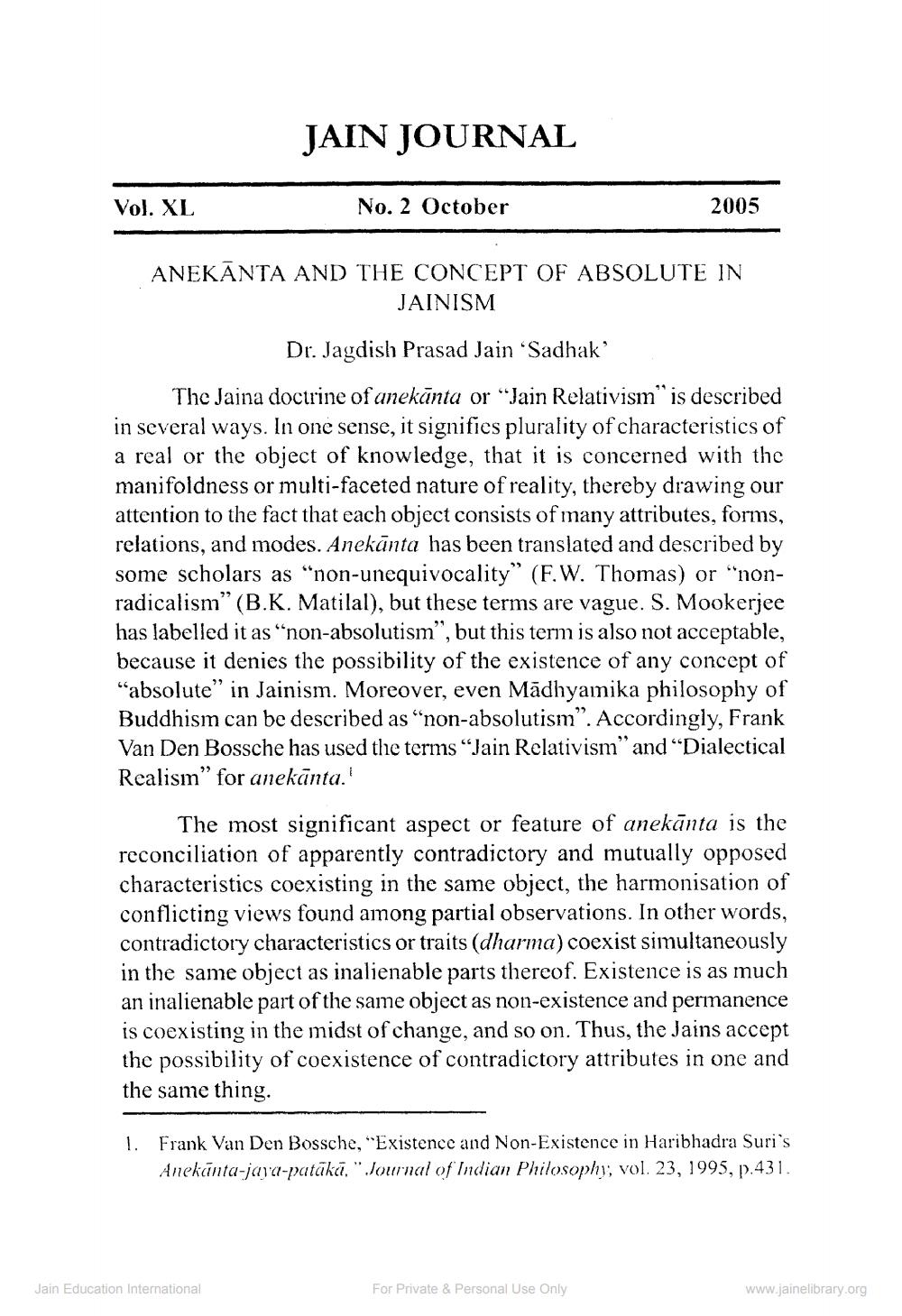________________
JAIN JOURNAL
Vol. XL
No. 2 October
2005
-
ANEKĀNTA AND THE CONCEPT OF ABSOLUTE IN
JAINISM Dr. Jagdish Prasad Jain “Sadhak' The Jaina doctrine of anekānta or “Jain Relativism" is described in several ways. In one sense, it signifies plurality of characteristics of a real or the object of knowledge, that it is concerned with the manifoldness or multi-faceted nature of reality, thereby drawing our attention to the fact that each object consists of many attributes, forms, relations, and modes. Anekānta has been translated and described by some scholars as "non-unequivocality” (F.W. Thomas) or "nonradicalism” (B.K. Matilal), but these terms are vague. S. Mookerjee has labelled it as "non-absolutism”, but this term is also not acceptable, because it denies the possibility of the existence of any concept of "absolute” in Jainism. Moreover, even Mādhyamika philosophy of Buddhism can be described as “non-absolutism”. Accordingly, Frank Van Den Bossche has used the terms "Jain Relativism" and "Dialectical Realisin" for anekānta.
The most significant aspect or feature of anekānta is the reconciliation of apparently contradictory and mutually opposed characteristics coexisting in the same object, the harmonisation of conflicting views found among partial observations. In other words, contradictory characteristics or traits (dharma) coexist simultaneously in the same object as inalienable parts thereof. Existence is as much an inalienable part of the same object as non-existence and permanence is coexisting in the midst of change, and so on. Thus, the Jains accept the possibility of coexistence of contradictory attributes in one and the same thing.
1. Frank Van Den Bossche, "Existence and Non-Existence in Haribhadra Suri's
Anekūnta-jaya-patāki. "Journal of Indian Philosophi; vol. 23, 1995, p.431.
Jain Education International
For Private & Personal Use Only
www.jainelibrary.org




